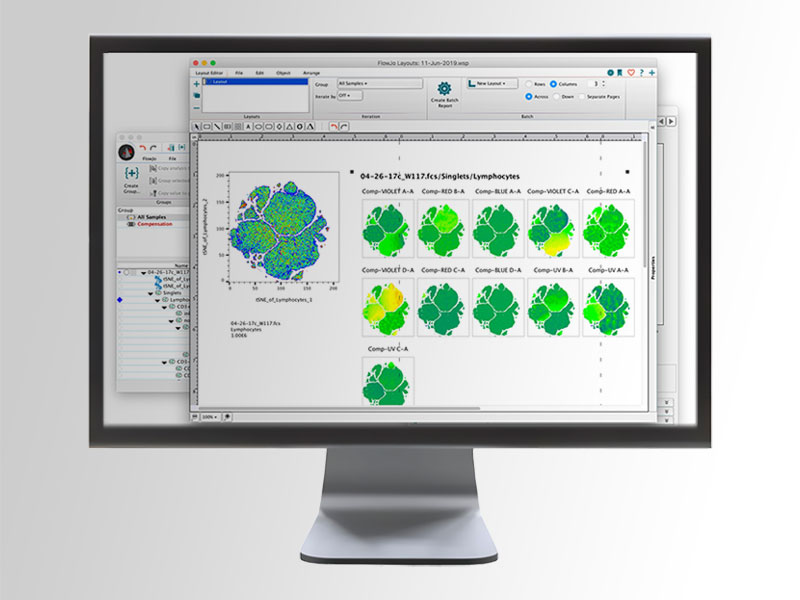

Many of these keywords have values that are recorded by the cytometer.

$VOL Volume of sample run during data acquisition. $SYS Type of computer and its operating system. $SRC Source of the specimen (patient name, cell types) $SPILLOVER Fluorescence spillover matrix. $PnCALIBRATION Conversion of parameter values to any well defined units, e.g. $ORIGINALITY Information whether the FCS data set has been modified (any part of it) or is original as acquired by the instrument. $LOST Number of events lost due to computer busy. $LAST_MODIFIER Name of the person performing last modification of a data set. $LAST_MODIFIED Timestamp of the last modification of the data set. $INST Institution at which data was acquired. $GATING Specifies region combinations used for gating. $FIL Name of the data file containing the data set. $EXP Name of investigator initiating the experiment. ISAC Recommendation FCS 3.1 – Data File Standards for Flow Cytometry 11/34 $ETIM Clock time at end of data acquisition. $CSVnFLAG The bit set as a flag for subset n. $CSVBITS Number of bits used to encode a cell subset identifier. $CSMODE Cell subset mode, number of subsets to which an object may belong. $BTIM Clock time at beginning of data acquisition. $ABRT Events lost due to data acquisition electronic coincidence. Although these keywords are considered optional, most cytometer manufacturers still use them. The keywords that will help you analyze your data are the optional keywords. 2. Other keywords are optional and can assist you in analyzing your data. They can help with troubleshooting, if you are having trouble in the analysis program, but for the most part, not many people need these keywords. Many of these keywords have little value to you, as the user. $TOT Total number of events in the data set. $PnB Number of bits reserved for parameter number n. $NEXTDATA Byte offset to next data set in the file. $MODE Data mode (list mode – preferred, histogram – deprecated). $ENDSTEXT Byte-offset to the last byte of a supplemental TEXT segment. $ENDDATA Byte-offset to the last byte of the DATA segment. $ENDANALYSIS Byte-offset to the last byte of the ANALYSIS segment. $DATATYPE Type of data in DATA segment (ASCII, integer, floating point). $BYTEORD Byte order for data acquisition computer. $BEGINSTEXT Byte-offset to the beginning of a supplemental TEXT segment.

$BEGINDATA Byte-offset to the beginning of the DATA segment. $BEGINANALYSIS Byte-offset to the beginning of the ANALYSIS segment. This is the list of primary keywords required: When it comes to annotating your flow cytometry data with keywords, there are 3 things you need to know… 1. Certain keywords are “required” by the Flow Cytometry Standard (FCS). You can read more about the FCS file format here. These include information on the parameters, scaling, FCS file format, date, file name, and numerous others. The purpose of this was so that no matter who manufactured the instrument, or the analysis software, files could be created and read in any system.Īs part of this FCS standard, ISAC created a set of core keywords that MUST be used. The flow cytometry standard file formats (FCS) was developed by the International Society for the Advancement of Cytometry (ISAC) to create a standard file format for all cytometers to use. FlowJo makes this easy to do.įirst off, what are keywords and why do you want to use keywords? Most people don’t take advantage of the keywords embedded in the FCS (Flow Cytometry Standard) files to annotate their data.


 0 kommentar(er)
0 kommentar(er)
